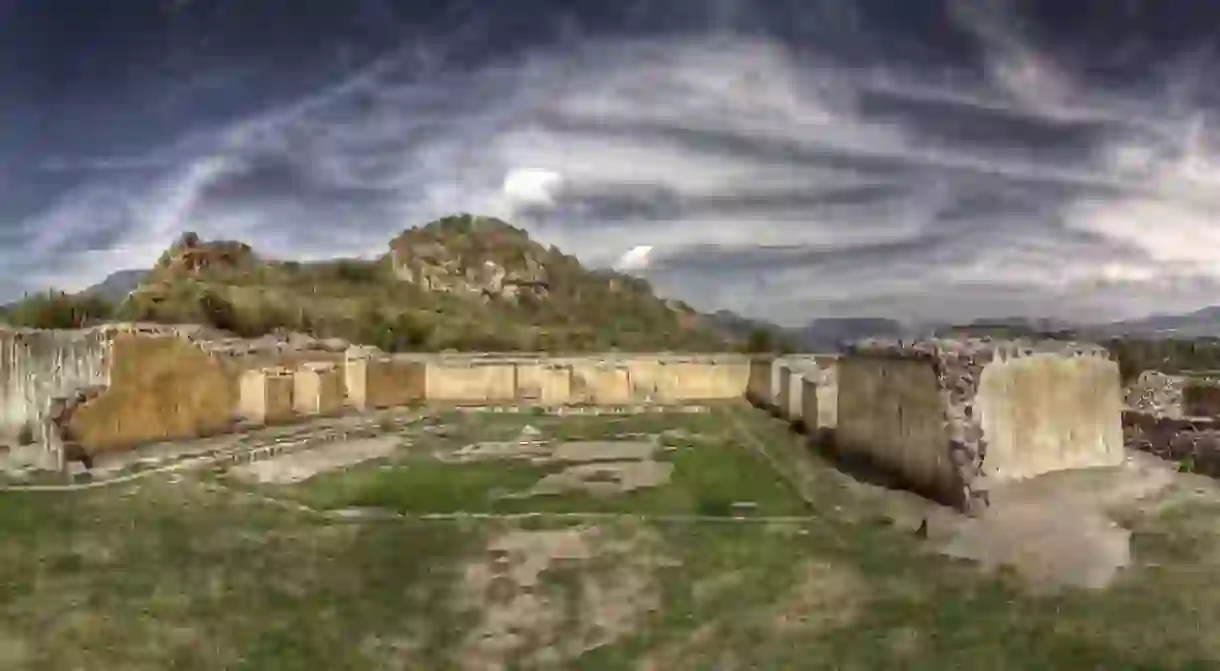The Best Archaeological Sites to Visit in Oaxaca

The Zapoteco and Mixteca peoples of Oaxaca built and lived in the cities and religious centers of the Valley of Oaxaca until the time of the Spanish colonization, which led to the destruction of many beautiful structures and important monuments. But there are still lots of site where you can learn a little history and take a step back to the times when these indigenous groups inhabited the area. We always suggest you hire a local guide, especially in places with little tourism infrastructure, that way you can help the local economy.
Monte Alban
Archaeological site, Ruins

Zaachila
Mitla
Oaxaca’s second most important pre-Colombian ruins in the state, Mitla was the religious center for the Zapoteco people was believed to be a gateway place between the living and the dead. This city’s claim to fame is its geometrically perfect wall mosaics created by stone pieces that fit together so tightly no mortar is needed. The Zapoteco people inhabited Mitla until around 1000AD when they were kicked out by the Mixtecas who then had control over the city until the Spanish destroyed it in 1553.

Casa de la Cacica
Part of the chiefdom of Teposcolula, one of the Mixteca states at the time the Spanish arrived in Mexico, the Casa de la Cacica are the remnants of part of the religious and administrative buildings of the chiefdom that were moved from their original pre-hispanic location on top of the Yucundaa hill. The building was then constructed to incorporate both indigenous and Spanish elements and is believed to date back to 1550.
Yucuita
Yucuita was a small Mixteca village dedicated to agriculture and the obsidian trade. This archeological site is one of the oldest and longest inhabited in Mexico and has therefore been the object of lots of study about the Mixteca people. There are two complexes to visit here, one that housed residents and one that served as a ceremonial center. The site is also known for the quantity of painted ceramics found in the area.
Yagul
Yagul, sometimes spelled Yugul by neighbors, is the ruins of a town that dates back to 3000AD. It was one of the places many residents came after the fall of Monte Alban and has at least half a dozen structures to tour around including a tomb decorated with stone reliefs. Nearby are cave paintings believed to have been created by some of the earliest nomadic residents of the Valley of Oaxaca.

Huamelulpan
The name Haumelulpan means Flying Hill – the city was built on a hill with terraced sides. Here you will see massive, level, terraced platforms, with a formal drainage system built into them. Some of these platforms served as the base of pyramids or the homes of the elite. The city had residents during three different periods of time that spanned from 400BC to 600AD.
Dainzú
Dainzú is another Oaxacan archeological site that has been built into the hills around it. It was inhabited at the same time as Monte Alban but is believed to be older. There are a series of stone reliefs on one building that depict ancient ball players and other structures that include residences, religious centers and a ball court. It’s believed to have had residents from 750BC to 1200AD.

Guiengola
This archeological site in the southeast part of Oaxaca state is thought to have been a grand fortress. The city was built in such a way as to be difficult to attack and its therefore believed that various indigenous tribes lived there at different times. Archeological evidence points to it being the site of a battle between the Mixtecas and Zapotecas. They believe the city was inhabited until 1350AD.
Lambityeco
This Oaxacan archeological site is well known for the intricate and beautiful art found here, in particular figureheads of the god Cocijo , one of the most important of the pantheon of deities worshiped by the Zapotec people. This site is unusual in that instead of an agricultural economy like most neighboring Zapoteca towns, Lambityeco was famous as a center for the cultivation and sale of salt.
San José el Mogote
One of the oldest settlements in the Valley of Oaxaca, San Jose el Mogote predates the city of Monte Alban and is believed to be one of the first settlements to create pottery in the area. Because this site has been extensively studied by archeologists from a US University there happens to be quite a bit of information about this Zapoteca settlement in English.













